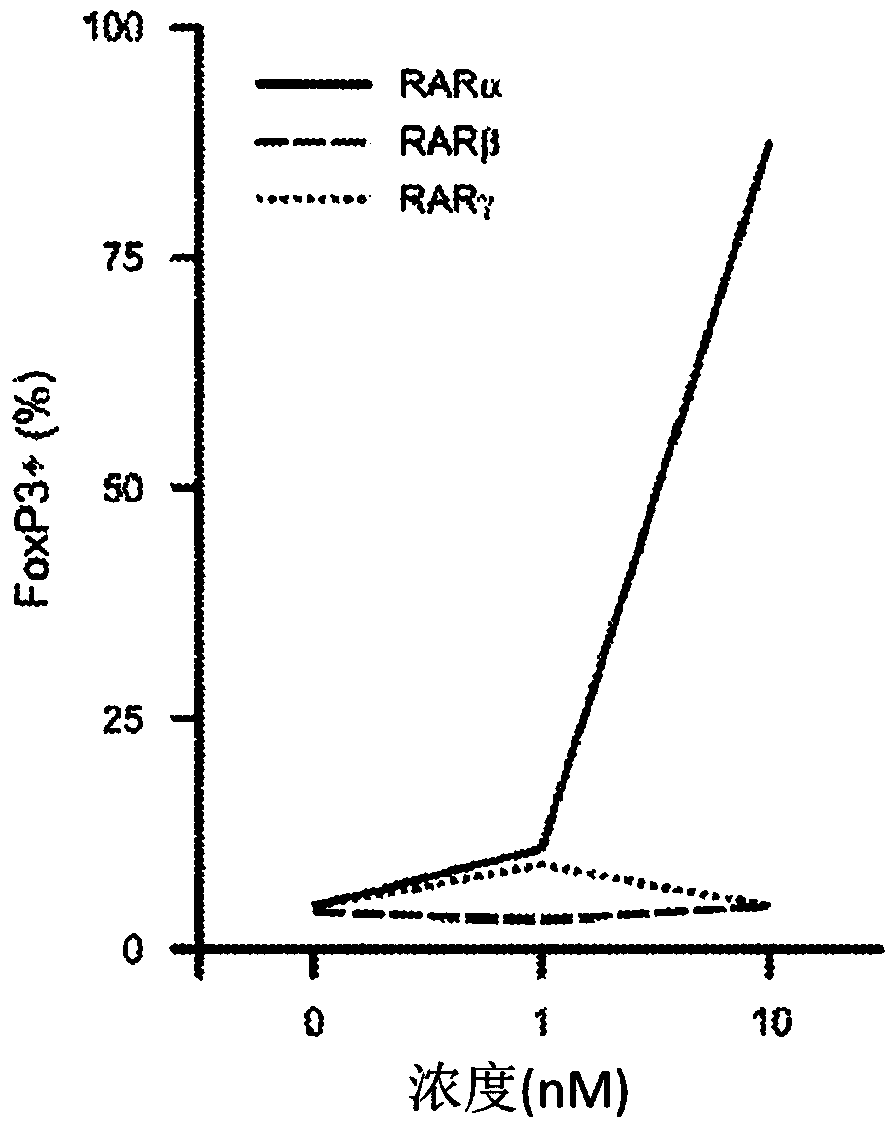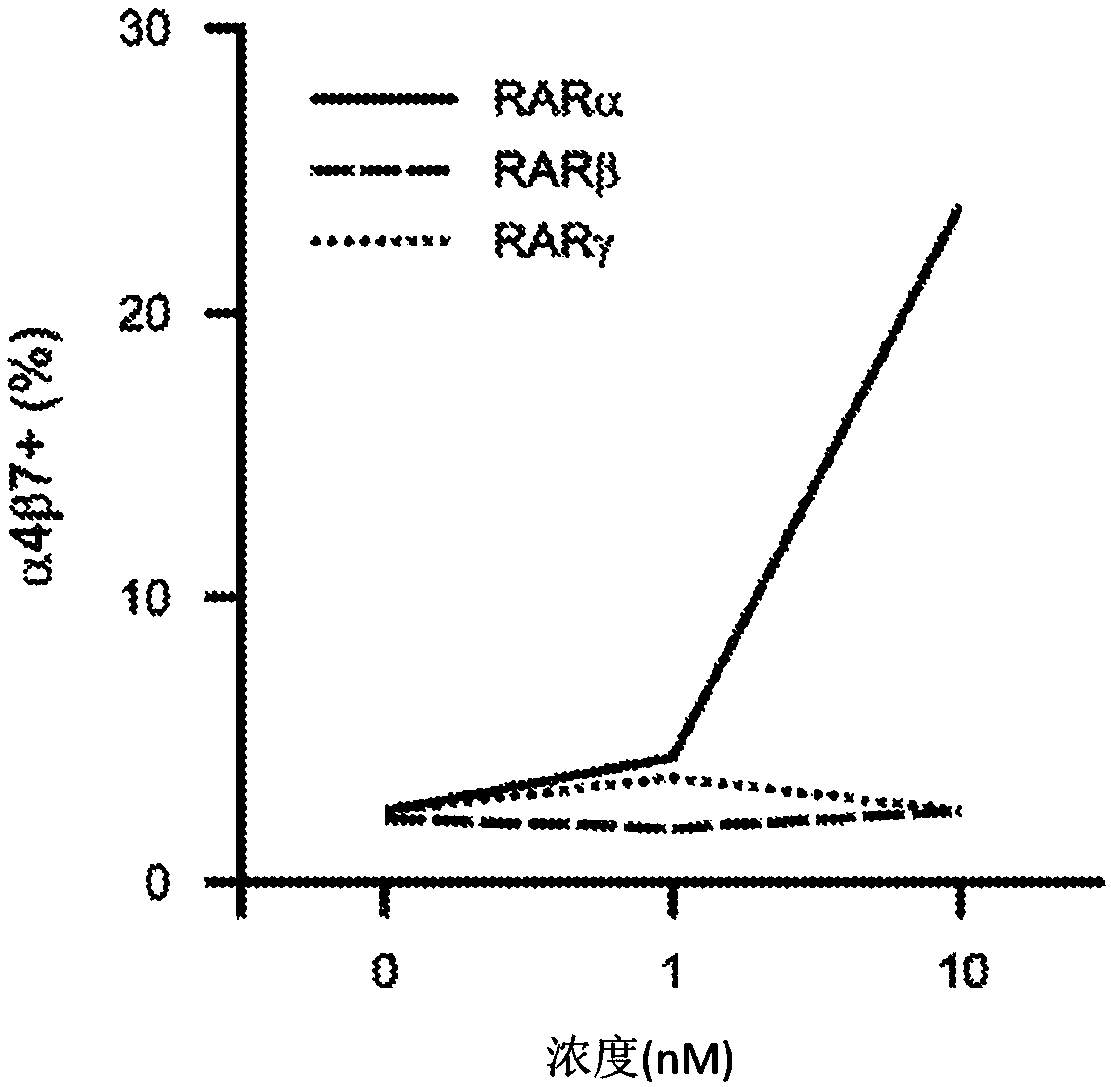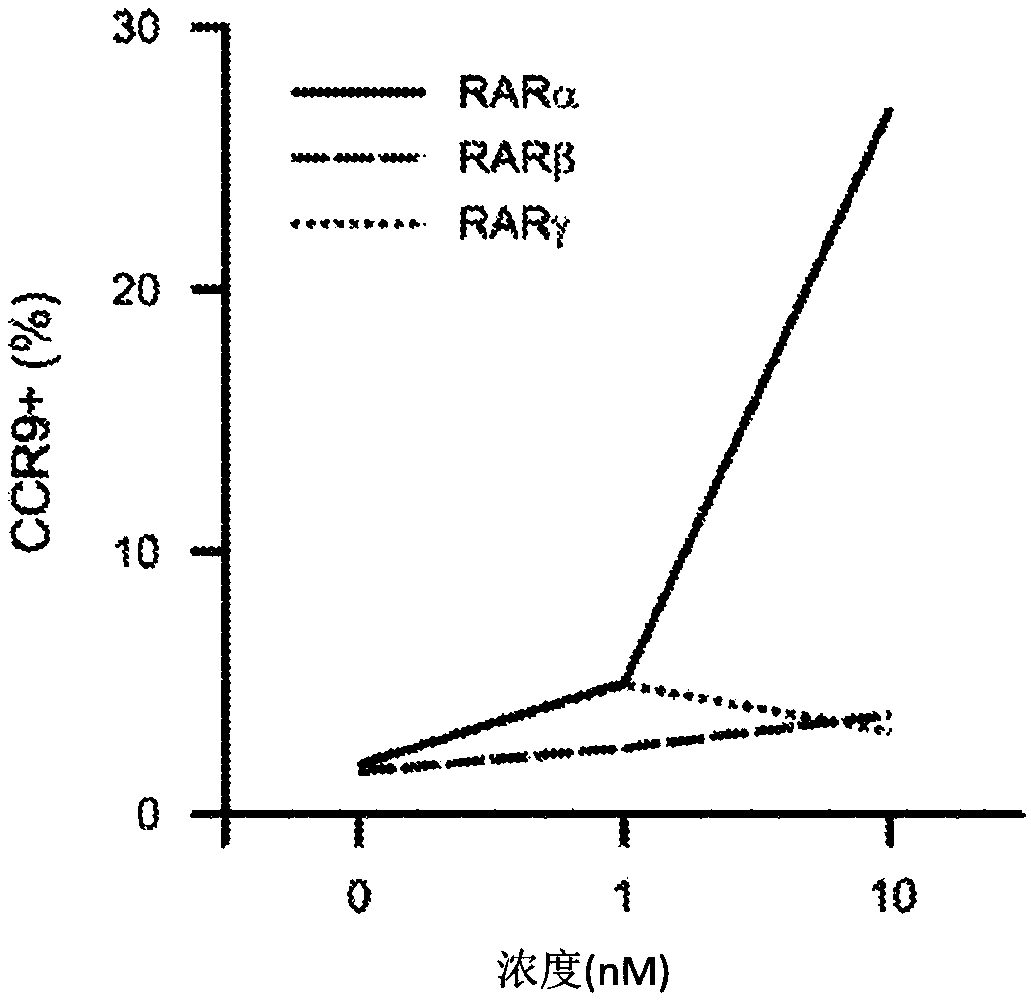Receptor selective retinoid and rexinoid compounds and immune modulators for cancer immunotherapy
A technology of retinol and flavonol, applied in immunoglobulin, anti-animal/human immunoglobulin, anti-receptor/cell surface antigen/cell surface determinant immunoglobulin, etc., can solve problems such as limiting activity
- Summary
- Abstract
- Description
- Claims
- Application Information
AI Technical Summary
Problems solved by technology
Method used
Image
Examples
Embodiment 1
[0113] RARα signaling induces Foxp3 expression
[0114] It is important to determine which RAR (RARα, RARβ, RARγ) signaling pathway is important in the induction of Foxp3 expression. To determine this, use flow cytometry through GFP-based - Phenotype sorting and isolation Purification of original CD4 from Foxp3-GFP mice + CD25 - FoxP3 - cell. In the presence of IL-2 and TGF-β, these cells are polyclonally activated with αCD3 in vitro. To identify RARs involved in RA-induced Foxp3 expression, cultured cells were incubated with RAR selective agonists. Then evaluate GFP on cultured cells + (Foxp3 + )Frequency of. Regarding the use of selective agonists, only RARα agonists have a significant effect on the expression of Foxp3, inducing almost 100% Foxp3+ T cells, and enhancing the expression of α4β7 and CCR9 (intestinal homing receptor) (Figure 1). RARγ and RARβ agonists have no effect. These results indicate that RARα selective agonists can be used to reduce symptoms of inflammat...
Embodiment 2
[0116] Compound 5183 is specific for RARα
[0117] In order to determine whether a compound having the structure of Formula I is a RARα selective agonist, a displacement assay was used to test the ability of compound 5183 to bind to RARα, RARβ and RARγ to measure agonist binding affinity and a transactivation assay to measure agonist activity. These results indicate that compound 5183 selectively binds RARα with high affinity (Table 1) and specifically activates RARα ( figure 2 ). This RARα selective agonist can minimize the side effects associated with pan-activation, including mucosal skin toxicity, headaches and pro-inflammatory events in clinical studies.
[0118] Table 1 The binding affinity of 5183 to RARα, RARβ and RARγ
[0119] RARα
Embodiment 3
[0121] RARα selective agonists regulate T cell differentiation
[0122] In order to determine whether RARα selective agonists can affect T cell differentiation, T cells were incubated with RARα selective agonists to determine its effect on Foxp3 expression. Purification of primary CD4 from Foxp3-GFP mice by GFP-based phenotype sorting and separation using flow cytometry + CD25 - FoxP3 - cell. In the presence of IL-2 and TGF-β, these cells are polyclonally activated with αCD3 in vitro. These cells were then cultured in a medium containing various concentrations of compound 5183 (RARα selective agonist), and the expression of FoxP3-GFP was analyzed by flow cytometry. The RARα selective agonist compound 5183 enhanced the differentiation of immunosuppressive Treg cells and inhibited the differentiation of naive T cells into inflammatory TH17 cells in vitro (Table 2).
[0123] Table 2 Effects of RARα agonists on T cell differentiation
[0124]
[0125] In order to expand the above find...
PUM
 Login to View More
Login to View More Abstract
Description
Claims
Application Information
 Login to View More
Login to View More - R&D
- Intellectual Property
- Life Sciences
- Materials
- Tech Scout
- Unparalleled Data Quality
- Higher Quality Content
- 60% Fewer Hallucinations
Browse by: Latest US Patents, China's latest patents, Technical Efficacy Thesaurus, Application Domain, Technology Topic, Popular Technical Reports.
© 2025 PatSnap. All rights reserved.Legal|Privacy policy|Modern Slavery Act Transparency Statement|Sitemap|About US| Contact US: help@patsnap.com



